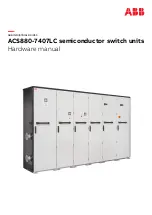[6] Handling Guide
93
[ 6 ] Handling Guide
1.
Using Toshiba Semiconductors Safely
TOSHIBA is continually working to improve the quality and reliability of its products.
Nevertheless, semiconductor devices in general can malfunction or fail due to their inherent electrical
sensitivity and vulnerability to physical stress. It is the responsibility of the buyer, when utilizing
TOSHIBA products, to comply with the standards of safety in making a safe design for the entire
system, and to avoid situations in which a malfunction or failure of such TOSHIBA products could
cause loss of human life, bodily injury or damage to property.
In developing your designs, please ensure that TOSHIBA products are used within specified operating
ranges as set forth in the most recent TOSHIBA products specifications. Also, please keep in mind the
precautions and conditions set forth in the “Handling Guide for Semiconductor Devices,” or
“TOSHIBA Semiconductor Reliability Handbook” etc..
The TOSHIBA products listed in this document are intended for usage in general electronics
applications (computer, personal equipment, office equipment, measuring equipment, industrial
robotics, domestic appliances, etc.). These TOSHIBA products are neither intended nor warranted for
usage in equipment that requires extraordinarily high quality and/or reliability or a malfunction or
failure of which may cause loss of human life or bodily injury (“Unintended Usage”). Unintended
Usage include atomic energy control instruments, airplane or spaceship instruments, transportation
instruments, traffic signal instruments, combustion control instruments, medical instruments, all
types of safety devices, etc.. Unintended Usage of TOSHIBA products listed in this document shall be
made at the customer’s own risk.
















